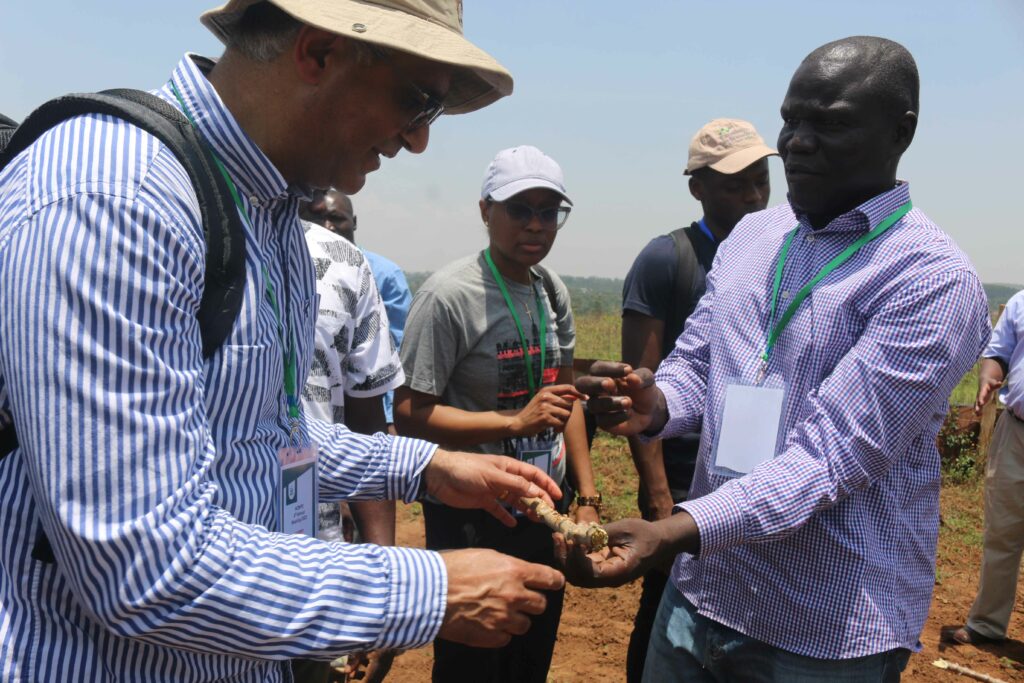By Agnes Nantambi
The National Agricultural Research Organisation (NARO) has introduced a coating technology, to increase the germination rate of casava.
This was after realizing that cassava seeds are planted about 24cm long making them so bulky and requiring about eight bags to plant in an acre piece of land, which has not been appealing to the seed companies because of the bulkiness and perishability.
As a result, NARO together with Embrapa which is the Agriculture Research Section of Brazil, came up with the plant protection technology that involves coating the cassava stem or seed with the plant protection products which is a combination of a fungicide and an insectcide.
According to Gerald Adiga, a research officer working with NARO NaCRRI, the combination protects the stem cutting from any arthropods in the soil like termites, millipedes at the same time protects the rotting which come as a result of the fungus.
“As a result of this, we have increased the germination percentage of some varieties which were giving us 60% to 90 or even to 100%.

Because of the increased germination, we realise a high plant population in the field due to increased germination resulting from seed coating.
Under this technology, you don’t need to go into the 30cm size of the long ruler planting material but we have reduced the size of the stem cutting to 12cm and as we talk now, when we coat it with Mandi plus technology, we only use 12cm,” he explained.
The technology he says comes with the advantage of boosting the early vigor of the cassava stem and because of that, there is rapid multiplication of the planting materials.
“In case there are new varieties that need to be released through this technology, this variety can be able to reach the farmers within a very short time.
Because of the early boosting of the early vigor, we also recorded an increase of the root yield by about 80tones,” he said.
He explained that Mandiplus is a Portuguese technology which they copied and adopted the way it is saying that, they are carrying out field trials across the country to establish the economics between the farmers using it against those who do not use it, in terms of earning and food security.
He however said that the technology being chemical oriented, they are also cautious about it saying they have collected samples at the harvest of the roots, shipped them to south Africa to test against the residual event of the chemicals and found out that there is no event.
“Given that their farmers who eat cassava leaves, we are now trying to test the residual effects at different levels so that we are able to make the right recommendations,” he said.
He advised farmers wanting to maximize their yield to always be cautious of the seed they plant and the source of the seed, saying it must be verified in terms of the purity, quality and the disease status.
“This can only be possible when dealing with seed companies or entrepreneurs who are certified or at least involving the extension officers to give you an advice on the type of seed you can plant, “he said
He said, it will be wastage of resources and energy when one plants one acre and at the end, the whole field is rotten just because of diseases and not knowing the status of the seeds they planted.
He observed that there are some farmers who still feel that cassava stems should not be bought but said they should rather move out from there, such that they maximize yields, fight hunger in homes and increase incomes within their households.
Dr. Christopher Omongo the team leader Cassava root crop program expressed disappointment to farmers who ignore their cassava crop without knowing that cassava can get them out of poverty.
He Observed that majority of the farmers plant cassava off season which greatly affects the yields.





